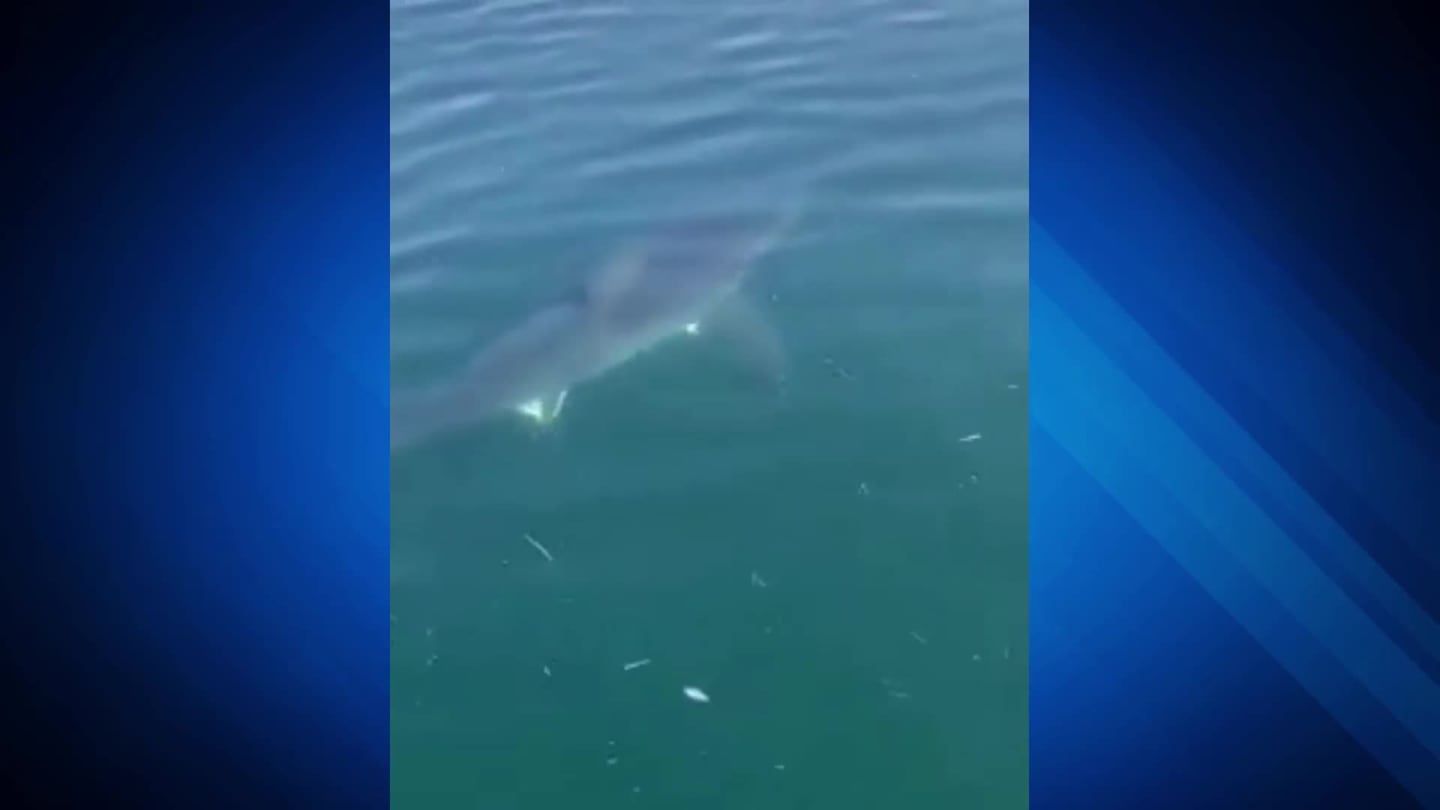CHATHAM, Mass. — The Atlantic White Shark Conservancy has updated its publicly available White Shark Catalog to include 2023 data gathered from Nova Scotia to Florida, and including waters off Cape Cod.
From footage collected during 22 research trips conducted off Cape Cod in 2023, the AWSC team identified 36 new individuals and documented the return of 44 sharks that had been identified in previous years.
Through collaborations with researchers in Canada, the AWSC team identified an additional 39 new individuals and recognized 4 sharks previously documented off Cape Cod in videos collected by Fisheries and Oceans Canada in the Gulf of Saint Lawrence and Atlantic Shark Expeditions off the coast of Nova Scotia.
Eleven new sharks were identified in video footage sent to AWSC by boaters, divers, and fishermen. This includes white shark ‘LeeBeth’, a 14-foot female who was tagged off South Carolina in partnership with Chip Michalove of Outcast Sportfishing and recently made shark science history by traveling into the waters off Matamoros, Mexico, the furthest west a white shark has ever been tracked into the Gulf of Mexico.
The AWSC’s catalog has photos and information on individual white sharks that have been identified along the Atlantic Coast. To date, AWSC has identified more than 700 white sharks since it began monitoring the population in 2014. The Catalog can be accessed via the White Shark Logbook.
“Individual white sharks travel thousands of miles along the eastern coast of the United States and Canada over the course of the year. Thanks to the work of our team, our collaborators, and the fishermen, divers, and boaters who provided videos or images of white sharks, we identified 91 new individuals in 2023,” said Megan Winton, AWSC Senior Scientist. “We’ve been able to grow the Catalog to over 700 individual white sharks documented in the Northwest Atlantic, making it one of the largest photo-ID databases of individual white sharks worldwide.”
White sharks can be distinguished and identified based on their unique coloration, markings on the gills and fins, and dorsal fin profiles.
Every year, AWSC researchers, working in collaboration with Dr. Greg Skomal of the Massachusetts Division of Marine Fisheries, use underwater video footage of white sharks collected along Cape Cod to document and match each shark encountered with previously identified individuals using the Catalog.
This allows researchers to determine whether an individual has been seen before. ‘New’ sharks are entered into the catalog and assigned a nickname, many of which are inspired by that individual’s unique markings. Once an individual is entered into the catalog, researchers can keep records of when and where that shark was seen over time and continually add to their knowledge of the population.
“We couldn’t do this work without the support of people on the water serving as our eyes and ears. We encourage everyone on the East Coast of the US and Canada who encounters a white shark to send us video footage and photos so we can continue to build and enhance this invaluable catalog,” said Cynthia Wigren, CEO and Co-Founder of the Atlantic White Shark Conservancy.
Anyone who captures footage of a white shark in the waters along the Atlantic coast of the U.S. or Canada or in the Gulf of Mexico can send it to the White Shark Logbook by emailing info@atlanticwhiteshark.org.
This is a developing story. Check back for updates as more information becomes available.
Download the FREE Boston 25 News app for breaking news alerts.
Follow Boston 25 News on Facebook and Twitter. | Watch Boston 25 News NOW
©2024 Cox Media Group







